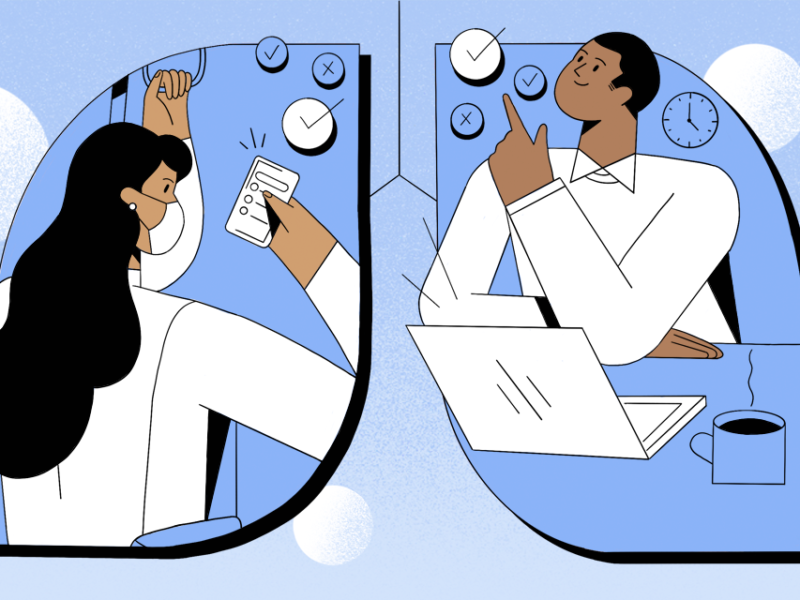The U.S. government received its first shipment of an order of 2 million doses of smallpox medication last week. The government is stockpiling the drug to be used in the event of a bioterrorist attack alongside the smallpox vaccine.
Smallpox is a highly contagious disease caused by the virus Variola. For thousands of years, smallpox was a serious threat, killing about thirty percent of people infected.
A global eradication campaign, led by the WHO, began in the 1960s and ended in 1978 with the last naturally occurring case in Somalia. At this point, doctors stopped administering the smallpox vaccine regularly because the disease was no longer a threat and the vaccine can have adverse side effects.
Because the virus was eradicated and regular vaccination ended, people are no longer exposed to it regularly and therefore do not have protection through immunity.
In 1980, when the disease was declared officially eradicated, all samples of the virus were securely held in American or Russian laboratories. However, some believe that the virus may exist in places other than these laboratories.
Since September 11, 2001, the U.S. government has become more vigilant about the threat of a bioterrorist attack. If a sample of the smallpox virus were stolen and disseminated at a busy airport or crowded sports arena, thousands of people could become infected.
Several governments worldwide have begun stockpiling smallpox vaccines in case an outbreak did occur. Since 2001, the U.S. stockpile of the vaccine has increased from fifteen million doses to 300 million. Japan and Israel are the only other countries that have purchased enough vaccine to protect their entire countries.
Many experts are concerned that the United States has agreed to purchase too much of the drug at too high a price. The drug Arestvyr, manufactured by Siga Technologies, costs more than $200 per treatment. Robin Robinson, the director of the Biomedical Advanced Research and Development Authority, said this price was “fair and reasonable” compared with the price of similar antiviral drugs.
The high price of the drug can partly be explained by the high costs of drug development. Because it costs so much to create these drugs, many drug companies will not invest in manufacturing if they cannot be guaranteed to make a profit. Drugs for rare diseases are particularly risky because they won’t be used often. Drugs for already eradicated diseases, perhaps even more so.
Siga reportedly spent $80 million on the development of this drug, and will receive $463 million from the deal with the United States. While the actual cost to produce a dose of the smallpox drug has not been reported, it is suspected to be much less than the $200 selling price.
There is also some debate about the huge quantity of drugs ordered. Robinson argued that two million doses was the correct amount to deal with an outbreak in a large U.S. city. Dr. Eric A Rose, president of Siga, agreed with this estimate, comparing it with the number of flu treatments the United States currently holds.
“There are eighty milllion courses of Tamiflu in the strategic national stockpile. Smallpox is just as contagious and has thirty times the mortality. By measures like that, I’d say 2 million is on the low end.”
Other experts have argued that because the United States has stockpiled so much smallpox vaccine, the country will not need this many drugs.
This argument is based in the way that smallpox is transmitted. The disease is transmitted through contact with vaporized droplets of the virus, usually from an infected person’s cough or sneeze. Within two weeks, an infected person will develop a rash on the arms, legs and face. Doctors call these two weeks before symptoms appear the “incubation period.”
An infected person does not become contagious until up to five days after their symptoms appear. For this reason, doctors can identify people who are infected and vaccinate others who would be at risk of infection before the virus can be transmitted. The smallpox vaccine is even effective when given up to three days after a person is exposed to the virus.
In the event of an outbreak, some experts believe that the vaccine would be a more useful tool for preventing the spread of the disease than treating those who are already sick. Dr. William H Foege, advisor to the Bill and Melinda Gates Foundation stated, “If we had to, we could vaccinate the entire country in three days.”
Dr. Foege argued that this vaccine is even easier to administer than most since it uses a forked pin and not a syringe. Non-health professionals like firefighters and teachers could be easily trained to help administer the vaccine where an outbreak had occurred.
It is also easy to vaccinate those people at risk of exposure because by the time a person is contagious, he or she is usually too sick to leave their home. The people who are therefore at the greatest risk are family members and friends.
Dr. Richard H. Ebright, an expert on bioweapons at Rutgers University, said the country should have more like 20,000 doses of the smallpox medication to use in conjunction with the vaccine.
